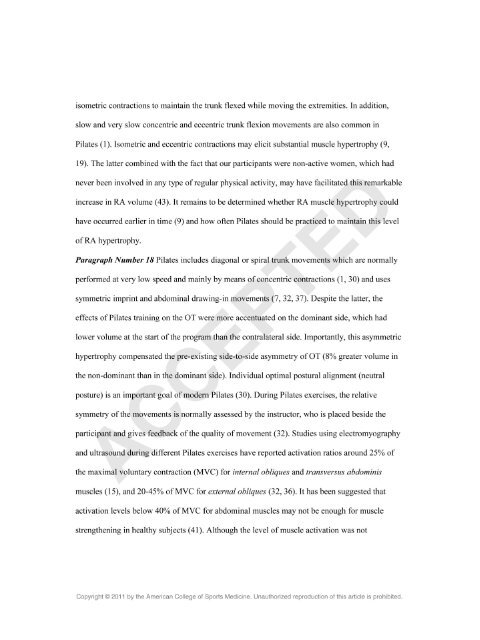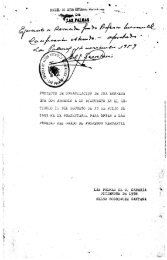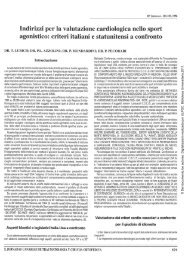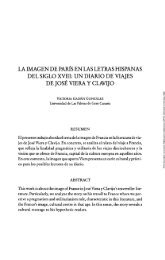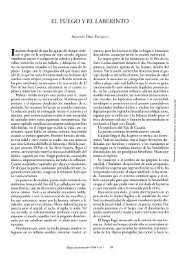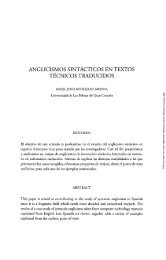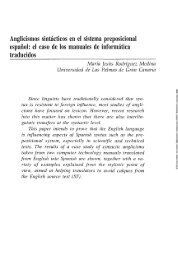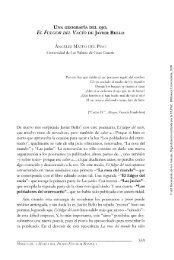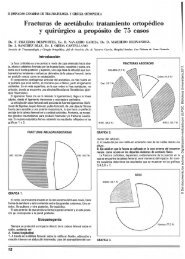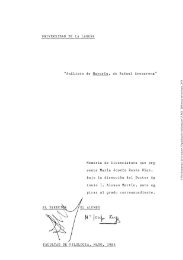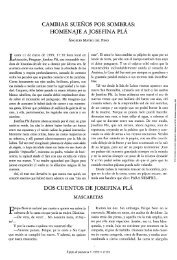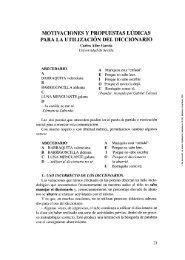Efectos de los ejercicios de Pilates sobre el volumen muscular en la ...
Efectos de los ejercicios de Pilates sobre el volumen muscular en la ...
Efectos de los ejercicios de Pilates sobre el volumen muscular en la ...
You also want an ePaper? Increase the reach of your titles
YUMPU automatically turns print PDFs into web optimized ePapers that Google loves.
isometric contractions to maintain the trunk flexed while moving the extremities. In addition,<br />
slow and very slow conc<strong>en</strong>tric and ecc<strong>en</strong>tric trunk flexion movem<strong>en</strong>ts are also common in<br />
<strong>Pi<strong>la</strong>tes</strong> (1). Isometric and ecc<strong>en</strong>tric contractions may <strong>el</strong>icit substantial muscle hypertrophy (9,<br />
19). The <strong>la</strong>tter combined with the fact that our participants were non-active wom<strong>en</strong>, which had<br />
never be<strong>en</strong> involved in any type of regu<strong>la</strong>r physical activity, may have facilitated this remarkable<br />
increase in RA volume (43). It remains to be <strong>de</strong>termined whether RA muscle hypertrophy could<br />
have occurred earlier in time (9) and how oft<strong>en</strong> <strong>Pi<strong>la</strong>tes</strong> should be practiced to maintain this lev<strong>el</strong><br />
ofRA hypertrophy.<br />
Paragraph N umber 18 <strong>Pi<strong>la</strong>tes</strong> in<strong>el</strong>u<strong>de</strong>s diagonal or spiral trunk: movem<strong>en</strong>ts which are normalIy<br />
performed at very low speed and mainly by means of conc<strong>en</strong>tric contractions (1, 30) and uses<br />
symmetric imprint and abdominal drawing-in movem<strong>en</strong>ts (7, 32, 37). Despite the <strong>la</strong>tter, the<br />
effects of <strong>Pi<strong>la</strong>tes</strong> training on the OT were more acc<strong>en</strong>tuated on the dominant si<strong>de</strong>, which had<br />
lower volume at the start ofthe program than the contra<strong>la</strong>teral si<strong>de</strong>. Importantly, this asymmetric<br />
hypertrophy comp<strong>en</strong>sated the pre-existing si<strong>de</strong>-to-si<strong>de</strong> asymmetry of OT (8% greater volume in<br />
the non-dominant than in the dominant si<strong>de</strong>). Individual optimal postural alignm<strong>en</strong>t (neutral<br />
posture) is an important goal of mo<strong>de</strong>m <strong>Pi<strong>la</strong>tes</strong> (30). During <strong>Pi<strong>la</strong>tes</strong> exercises, the r<strong>el</strong>ative<br />
symmetry of the movem<strong>en</strong>ts is normally assessed by the instructor, who is p<strong>la</strong>ced besi<strong>de</strong> the<br />
participant and gives feedback ofthe quality of movem<strong>en</strong>t (32). Studies using <strong>el</strong>ectromyography<br />
and ultrasound during differ<strong>en</strong>t <strong>Pi<strong>la</strong>tes</strong> exercises have reported activation ratio s around 25% of<br />
the maximal voluntary contraction (MVC) for internal obliques and transversus abdominis<br />
muscles (15), and 20-45% of MVC for external obliques (32, 36). It has be<strong>en</strong> suggested that<br />
activation lev<strong>el</strong>s b<strong>el</strong>ow 40% ofMVC for abdominal mus<strong>el</strong>es may not be <strong>en</strong>ough for muscle<br />
str<strong>en</strong>gth<strong>en</strong>ing in healthy subjects (41). Although the lev<strong>el</strong> of muscle activation was not<br />
Copyright © 2011 by the American College of Sports Medicine. Unauthorized reproduction of this article is prohibited.


